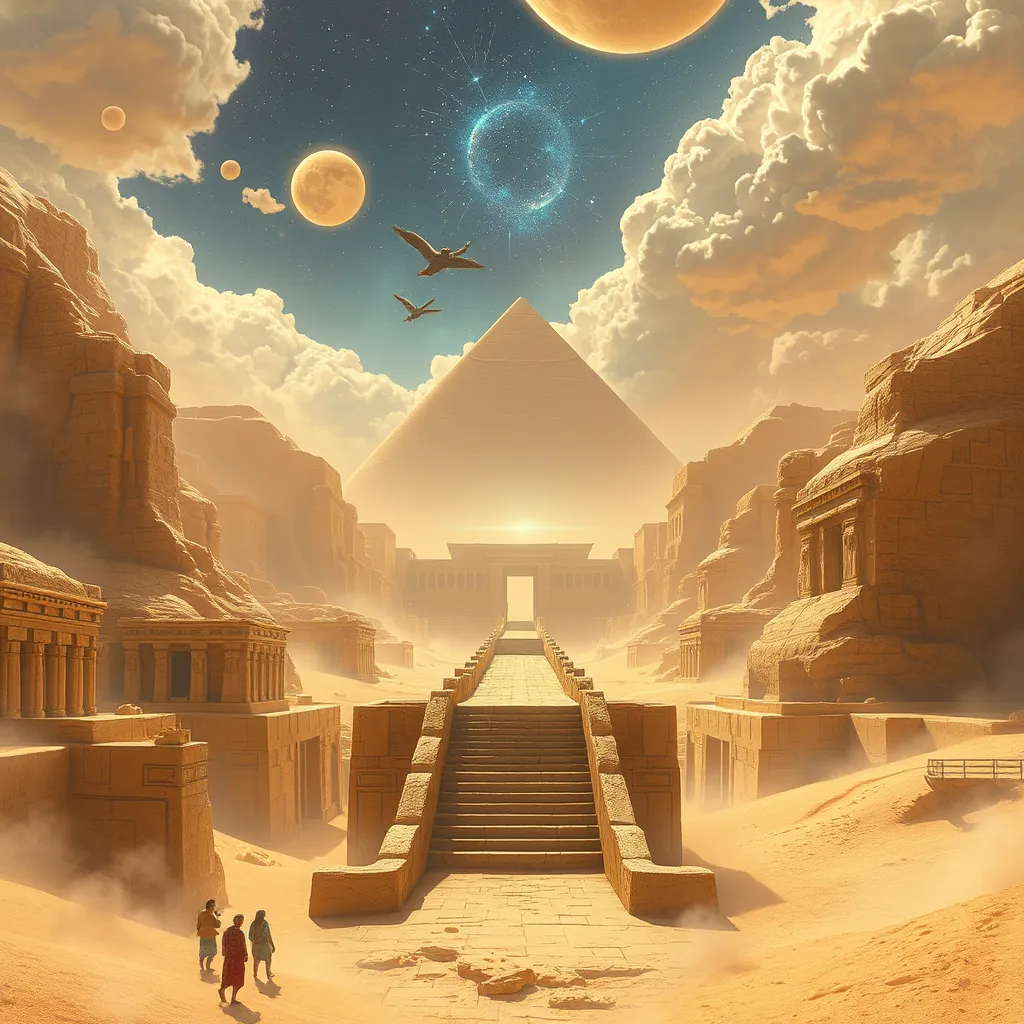The Duat: A Journey Through Time and Space
I. Introduction to the Duat
The Duat, often referred to as the Egyptian underworld, holds a significant place in ancient Egyptian beliefs. It is a realm that embodies the concept of the afterlife and serves as a passage for souls on their journey post-mortem. The significance of the Duat lies in its representation of the eternal struggle between light and darkness, life and death, and the hope for resurrection.
This article aims to explore the mythology, symbolism, and cultural importance of the Duat, shedding light on its role in ancient Egyptian civilization and its enduring legacy in modern times.
II. Historical Context of the Duat
The concept of the Duat has its origins in ancient Egyptian texts, such as the Pyramid Texts, which date back to the Old Kingdom (circa 2686–2181 BCE). These texts provide insight into the beliefs surrounding the afterlife and the journey of the deceased.
Throughout different dynasties, the interpretation and significance of the Duat evolved. During the Middle Kingdom (circa 2055–1650 BCE), the Duat was depicted as a more structured realm, with various landscapes and challenges. By the New Kingdom (circa 1550–1070 BCE), the Duat became more intricately associated with the deities who governed it.
Archaeological findings, such as tomb paintings and artifacts, have revealed much about the Duat and its importance in funerary practices. These discoveries underscore the belief in an afterlife and the need for preparation for the journey through the Duat.
III. The Mythological Landscape of the Duat
The geography of the Duat is often described as a complex and mystical landscape. It includes various realms, such as fields of reeds, rivers, and dark caverns. Each element serves a symbolic purpose, reflecting the duality of existence.
Key deities associated with the Duat include:
- Osiris: The god of the afterlife, resurrection, and fertility, who presides over the Duat.
- Anubis: The god of mummification and the protector of graves, guiding souls through the Duat.
- Ma’at: The goddess of truth and justice, who plays a crucial role in the judgment of souls.
The Duat serves as a testing ground for the deceased, where they must navigate various challenges and trials to reach the afterlife.
IV. The Journey of the Soul
Upon death, the soul embarks on a journey through the Duat. This journey is fraught with obstacles and challenges that the deceased must overcome to attain eternal life. The path is not linear; it involves traversing various realms and facing judgment.
Key challenges faced in the Duat include:
- Encounters with hostile entities and dangerous creatures.
- Overcoming illusions and navigating treacherous landscapes.
- Facing the judgment of Osiris, where the heart of the deceased is weighed against the feather of Ma’at.
The weighing of the heart is a pivotal moment in the journey. If the heart is lighter than the feather, the soul is deemed worthy and can proceed to the Field of Reeds, a paradise where the deceased can live in peace and abundance.
V. Symbolism and Artistry of the Duat
The Duat is richly represented in ancient Egyptian art, particularly within tombs and temples. Artistic depictions often illustrate the various stages of the journey, the deities involved, and the trials that the deceased must face.
Symbolic meanings behind the imagery include:
- The use of darkness to symbolize the unknown aspects of death.
- The river, often representing the transition between life and death.
- Reed fields, symbolizing rebirth and eternal life.
These artistic representations reflect the ancient Egyptian values of resurrection, justice, and the belief in an afterlife, emphasizing the importance of living a virtuous life to ensure a favorable outcome in the Duat.
VI. Cultural Impact of the Duat
The Duat significantly influenced ancient Egyptian religion and spirituality. It shaped their understanding of life, death, and what lay beyond. This belief system was so integral that it informed practices surrounding funerals, mummification, and the construction of tombs.
In literature and art, the Duat appears frequently, showcasing its central role in Egyptian culture. Modern interpretations of the Duat can be found in various forms, including:
- Books and films that explore ancient Egyptian mythology.
- Artworks that reinterpret the symbolism of the Duat.
- Scholarly research that examines its relevance in understanding human mortality.
When compared to other cultures’ afterlife beliefs, the Duat reveals both unique perspectives and shared themes, such as the journey of the soul and the importance of moral integrity.
VII. Contemporary Relevance of the Duat
In recent years, there has been a resurgence of interest in ancient Egyptian spirituality, with many seeking to understand the beliefs surrounding the Duat. This renewed fascination is reflected in popular culture, where elements of the Duat are often incorporated into movies, novels, and art.
Examples of the Duat’s presence in popular culture include:
- Films that depict ancient Egyptian mythology and the afterlife.
- Television series that explore themes of resurrection and immortality.
- Video games that incorporate the Duat as a setting or storyline.
Lessons from the Duat can offer modern insights into concepts of life and death, encouraging reflection on morality, the impact of our actions, and the hope for continuity beyond physical existence.
VIII. Conclusion
The Duat serves as a profound symbol of ancient Egyptian civilization, encapsulating their beliefs about the afterlife and the journey of the soul. Its significance extends beyond historical understanding, resonating with contemporary themes of mortality and spiritual exploration.
As we reflect on the enduring fascination with the Duat, we recognize its role in shaping human thought about existence, death, and what lies beyond. The journey through time and space that the Duat represents continues to inspire curiosity and reverence for ancient wisdom.




